Shrinath Thelapurath
Nonverbal Sound Detection for Disordered Speech
Feb 15, 2022
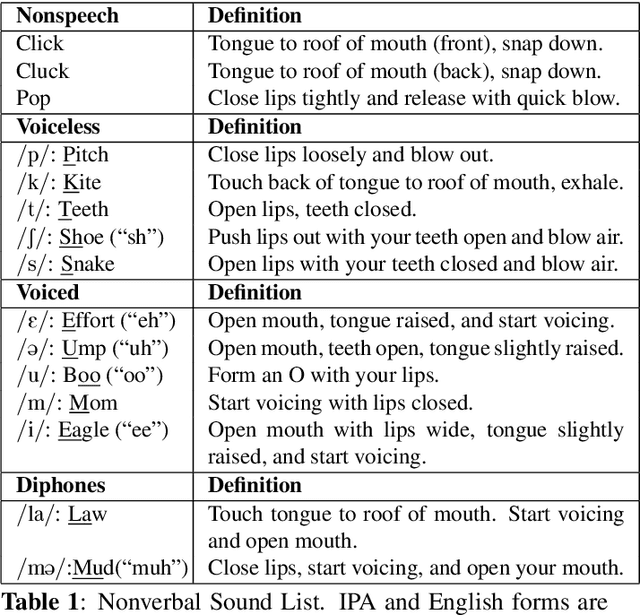


Abstract:Voice assistants have become an essential tool for people with various disabilities because they enable complex phone- or tablet-based interactions without the need for fine-grained motor control, such as with touchscreens. However, these systems are not tuned for the unique characteristics of individuals with speech disorders, including many of those who have a motor-speech disorder, are deaf or hard of hearing, have a severe stutter, or are minimally verbal. We introduce an alternative voice-based input system which relies on sound event detection using fifteen nonverbal mouth sounds like "pop," "click," or "eh." This system was designed to work regardless of ones' speech abilities and allows full access to existing technology. In this paper, we describe the design of a dataset, model considerations for real-world deployment, and efforts towards model personalization. Our fully-supervised model achieves segment-level precision and recall of 88.6% and 88.4% on an internal dataset of 710 adults, while achieving 0.31 false positives per hour on aggressors such as speech. Five-shot personalization enables satisfactory performance in 84.5% of cases where the generic model fails.
Analysis and Tuning of a Voice Assistant System for Dysfluent Speech
Jun 18, 2021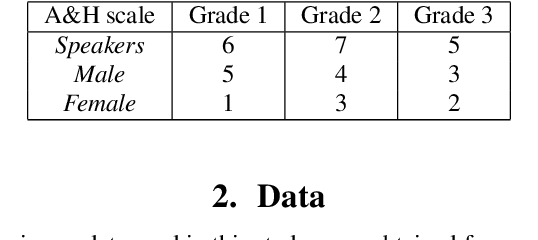
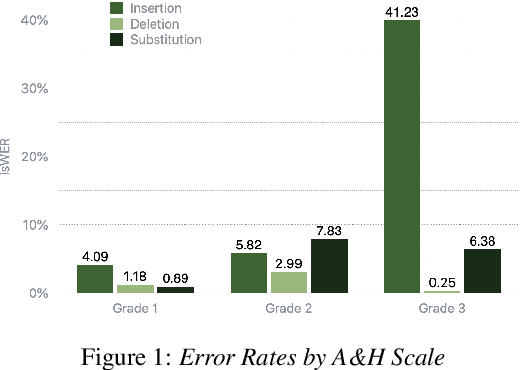
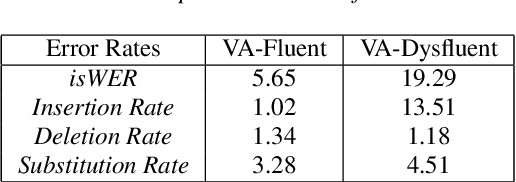
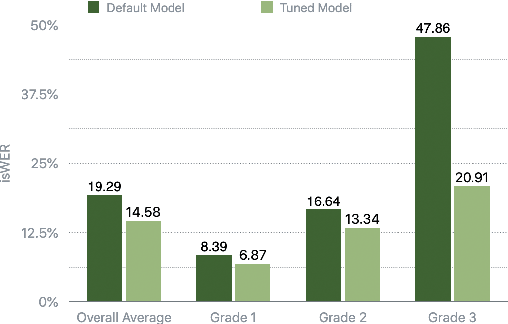
Abstract:Dysfluencies and variations in speech pronunciation can severely degrade speech recognition performance, and for many individuals with moderate-to-severe speech disorders, voice operated systems do not work. Current speech recognition systems are trained primarily with data from fluent speakers and as a consequence do not generalize well to speech with dysfluencies such as sound or word repetitions, sound prolongations, or audible blocks. The focus of this work is on quantitative analysis of a consumer speech recognition system on individuals who stutter and production-oriented approaches for improving performance for common voice assistant tasks (i.e., "what is the weather?"). At baseline, this system introduces a significant number of insertion and substitution errors resulting in intended speech Word Error Rates (isWER) that are 13.64\% worse (absolute) for individuals with fluency disorders. We show that by simply tuning the decoding parameters in an existing hybrid speech recognition system one can improve isWER by 24\% (relative) for individuals with fluency disorders. Tuning these parameters translates to 3.6\% better domain recognition and 1.7\% better intent recognition relative to the default setup for the 18 study participants across all stuttering severities.
 Add to Chrome
Add to Chrome Add to Firefox
Add to Firefox Add to Edge
Add to Edge